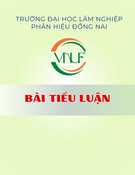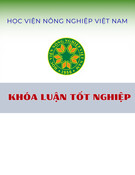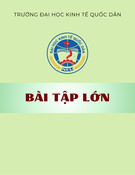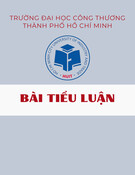
Maria C. Caldeira et al.Water stress and eucalyptus bark borer Original article
Positive effect of drought on longicorn borer larval
survival and growth on eucalyptus trunks
Maria da Conceição Caldeira*, Vicente Fernandéz, José Tomé
and João S. Pereira
Departmento de Engenharia Florestal, Instituto Superior de Agronomia, Tapada da Ajuda, 1349-017 Lisboa Codex, Portugal
(Received 1st December 2000; accepted 28 March 2001)
Abstract – Phoracantha semipunctata (F.) larvae attack and kill trees in Eucalyptus globulus (Labill.) plantations in Mediterranean
countries. To test the hypothesis that these attacks are more likely in arid environments, we examined the effects of water deficits in the
host trees of E. globulus on the mortality and growth of P. semipunctata larvae. Trees subjected to water stress during two subsequent
years were compared with rainfed and irrigated trees. Larvae of P. semipunctata were artificially introduced in the bark of trees of either
treatment. Larvae mortality was lower and weight gain was higher in water stressed trees than on rainfed trees. There was no larvae sur-
vival in irrigated trees. These results were related to changes in moisture content and concentration of soluble sugars in the bark of the
trees. The results of this study suggest that water stress had a major role on the survival and growth of the larvae.
Cerambycidae / Phoracantha semipunctata / plant-insect interaction / water-deficit / bark borer
Résumé – Effets positifs de la sécheresse du sol sur la survie et la croissance des larves de Phoracantha semipunctata sur
l’eucalyptus. Le Phoracantha semipunctata (F.) (Coleoptera : Cerambycidae) est un ravageur commun des plantations d’Eucalyptus
globulus (Labill.) des milieux méditerranéens, particulièrement dans les régions les plus arides. La mortalité et la croissance des larves
de P.semipunctata ont été comparées in vivo sur des arbres d’E.globulus soumis à trois traitements : stress hydrique durant deux années
consécutives, irrigation et témoins. Des larves de P.semipunctata ont été artificiellement introduites dans l’écorce des arbres soumis aux
trois traitements. Une plus faible mortalité et une augmentation de la biomasse des larves ont été obtenues chez les arbres stressés,
comparativement aux arbres témoins. Chez les arbres irrigués la mortalité de larves était totale. Les effets de la teneur en eau et de la
concentration en sucres solubles de l’écorce sur la mortalité larvaire ont aussi été testés. Nos résultats permettent de conclure que le stress
hydrique est un facteur déterminant dans la réussite de la colonisation de l’arbre par les larves de P.semipunctata.
Cerambycidae / Eucalyptus globulus /Phoracantha semipunctata / interaction plante-insecte / contrainte hydrique
Ann. For. Sci. 59 (2002) 99–106 99
© INRA, EDP Sciences, 2002
DOI: 10.1051/forest: 2001009
* Correspondence and reprints
Tel. +351 21 3653366; Fax +351 21 3645000; e-mail: mcaldeira@isa.utl.pt

1. INTRODUCTION
Phoracantha semipunctata (F.) (Coleoptera: Cerambycidae),
a phloem-boring insect, is a monophagous insect that has
became a pest in several countries where eucalyptus has
been planted as an exotic [5, 10, 39], including Portugal.
During drought years, this exotic beetle attacks and kills
a higher proportion of standing eucalyptus than in its na-
tive land in Australia [6, 12, 33]. Heavy infestations of P.
semipunctata larvae result in destruction of the cambium
layer and the rapid death of the tree [10, 13, 33].
P.semipunctata has no aggregation pheromones and no
mutualistic fungi associated, which could augment its ca-
pacity to colonise living trees [28]. Females of
P. semipunctata lay eggs in batches under loose bark or
in bark crevices of E. globulus trees. After few days, eggs
hatch and the neonate larvae bore through bark and feed
mainly along the cambium, phloem and some recently
differentiated xylem [7, 13]. Mature larvae bore into the
sapwood to construct a pupal cell. Adult insects are pres-
ent continuously from early spring through September
[12]. Development from egg to adult requires 3 months in
average but it can take from 2.5 to 12 months depending
on the temperature. In Portugal, P. semipunctata can
have one to two generations per year.
Several studies have linked outbreaks of bark beetles
to the occurrence of drought conditions on coniferous
plants [8, 11, 15, 17, 21, 35]. It has been suggested that
plants subjected to abiotic stress may become more suit-
able as food for insects, due to increased nutritional qual-
ity (e.g. soluble nitrogen) and/or reduced concentrations
of defensive chemicals [21, 30, 31, 41, 42]. However, the
postulate that drought stress may cause insect outbreaks
via direct effects on the host plants is still largely unre-
solved [19, 20], namely for angiosperm trees [18]. Dis-
crepancies between stress experiments and field
observations can be explained by the short duration of
stress treatments because, in nature, outbreaks of bark
borers often occur after several years of stressful condi-
tions [18, 23]. Also, unnatural manipulation of mature
trees aiming to induce water stress, e.g. root trenching,
may cause confounding effects (e.g. changes in carbohy-
drate partitioning) and unclear insect responses [3, 25].
Resistance of eucalyptus to attack by P. semipunctata
has been attributed to bark moisture [6, 12, 14] and/or
kino exsudation [4, 6, 33, 39, 40], a brown viscous fluid
composed of polyphenols that develops in traumatic pa-
renchyma after mechanical injury or insect damage to
bark [34]. However, in these studies the authors used tree
logs [6, 12], root trenched trees and young potted trees
that were subject to short periods of water stress [12, 14].
None of these studies used mature trees subjected to
natural water stress and/or assessed the importance of
nutritional quality of the bark of the trees to the
P. semipunctata larvae.
This study aimed at testing the hypothesis that water
deficits increase the susceptibility of eucalyptus trees to
P. semipunctata attack. In this study, tree susceptibility
[11] was assessed by the percentage of larvae survival
and larvae growth. For this we induced water stress in
mature eucalyptus trees without direct damages on trees
(apart from incisions made to install larvae) or concomi-
tant changes in their atmospheric environment to study
the effect of water deficits on the susceptibility of trees to
be colonised and eventually killed by P. semipunctata.
We studied the influence of water stress on tree growth,
bark moisture content, kino production, bark soluble sug-
ars and total nitrogen concentration. Larvae response to
bark physical and nutritional characteristics was assessed
by measuring larvae survival and growth.
2. MATERIALS AND METHODS
2.1. Study site
The study was conducted in an 8-year-old stand of Eu-
calyptus globulus (Labill.) (first rotation), planted with a
3×3 spacing (1010 trees per ha) with almost no
understory, at Herdade de Espirra (38º38’ N–8º36’ W).
Average tree height was of 16.01 m and average diame-
ter at breast height (d.b.h.) of 14.20 cm. Climate is of
Mediterranean-type, with mean annual rainfall of ca.
600 mm, occurring mostly from November to March.
Drought usually extends from the end of May to the end
of September. Mean annual temperature is 16.3 ºC. Soil
is a Dystric Cambisol (FAO/UNESCO) 40-cm-deep
overlying sandstone.
2.2. Experimental set-up
We randomly installed 6 plots of 144 m2on a homoge-
neous soil (6 soil profiles were analysed). Each plot in-
cluded 16 trees. Each of the following treatments was
applied to 2 plots: Irrigation (I): plots were irrigated
from June to September 1993 and 1994. Water was sup-
plied through micro-sprinklers to avoid tree water stress.
Water supply amounted to an average of 114 mm per
month in 1993 and 195 mm in 1994; Control (C):
100 Maria C. Caldeira et al.

rainfed plots. Total rainfall from January to October was
536.4 mm in 1993 and 443.1 mm in 1994; Stress (S):
rainfall water was prevented from infiltrating the soil
from March to September 1993 and 1994. In these plots,
ground was covered with a plastic roof 40 cm above the
soil and stem flow was diverted from reaching the soil
through tubing. This system was carefully supervised ev-
ery week. Moreover, around each plot, a 70-cm deep
ditch was dug and lined with a PVC sheath (0.8 mm
thick) to prevent lateral water movements. The rainfall
excluded from each plot amounted to 45.6% and 30.3%
of total precipitation in 1993 and 1994, respectively.
The trees chosen for all the observations and for the
artificial colonisation with larvae of P. semipunctata
were the four central trees of each plot, thus ensuring ho-
mogeneity of treatment application. A net protected
these trees, from ground level until 1.5 m of height, to
prevent natural attack by the borer.
2.3. Insects
Colonisation of trees was performed with larvae of P.
semipunctata. Eggs were not used because the only natu-
ral enemy present in Portugal that could influence the ef-
ficacy of P.semipunctata colonisation is an egg
parasitoid (Avettianela sp.). Eggs of P. semipunctata
were collected in the field and reared in the laboratory as
described in Hanks et al. [12] until eggs hatched. At
the beginning of September 1994, first instars of the
larvae were equally distributed into two incisions
made in the bark of the four central trees of each plot
(2 plots ×4 trees ×3 treatments). 20 larvae were intro-
duced in half of the trees of all treatments and 15 larvae
were introduced in the other half. Further, 15 larvae were
introduced in each of 8 logs (L) from 4 trees cut two days
earlier. Natural colonisation of trees was excluded by us-
ing a plastic net around trunks from ground until 1.5 m of
height.
2.4. Tree water status
Pre-dawn leaf water potential (Ψ) was measured in
three leaves of each tree using a Scholander pressure
chamber (P.M.S. 1000 Instrument, Corvallis, Oregon,
USA). Trees were accessed with scaffolding, as the aver-
age height of the base of the crown was 12 m. Measure-
ments were made in March, June, July and September
1994.
2.5. Tree growth
Tree diameter at breast height (d.b.h.) was measured
at the end of each growing season to assess the effect of
each treatment on tree growth. Total leaf area was deter-
mined in November 1994 by destructive sampling of all
trees. The crown of each tree was divided in thirds and all
leaves of each of these parts were collected into plastic
bags that were immediately closed and weighted. From
each third sub-samples were taken to estimate ratios of
dry: fresh weight and surface area: dry weight. Dry
weight was measured after leaves were dried at 80 ºC,
during 48 hours. The surface area was measured with an
area meter recorder (Portable area meter,LI-3000). Total
leaf area was calculated using these ratios and the total
fresh weight of the thirds of the crown for each tree.
2.6. Bark moisture, soluble sugars and nitrogen
content
Bark was sampled from the outer bark to the cambium
using a 1.6 cm diameter cork borer. All bark samples
were collected at dawn and approximately at breast
height (1.30 m) in all trees, in June, July and September
1994.
Bark moisture content was determined in two samples
per tree placed in hermetically closed boxes. These sam-
ples were weighted and dried at 80 ºC. Bark moisture
content of the logs was also determined in September.
Soluble sugars concentration in the bark tissues was de-
termined as described by Stitt et al. [37] and Stitt et al.
[38] in samples that were frozen in liquid nitrogen imme-
diately after collection. In the laboratory these samples
were stored at –80 ºC until analysed. Nitrogen concentra-
tion in the bark was determined by Kjeldhal method (Di-
gestion System 40, kjeltec Auto Analyzer 1030). Bark
samples were dried at 80 ºC and ground to the consis-
tency of a fine homogeneous powder.
2.7. Evaluation of insect attack
In November 1994 all trees were felled and bark was
carefully removed to evaluate larvae mortality and larvae
weight. The same methodology was used for logs (L).
2.8. Kino production
In November 1994, when all trees were felled and the
bark removed, kino reaction due to the larval penetration
was evaluated by drawing the exsudation area of each
Water stress and eucalyptus bark borer 101

tree in a plastic sheet. These areas were measured with an
area meter recorder (Portable area meter, LI-3000).
2.9. Statistical analysis
Multivariate repeated measurements analyses over
time were performed for the following parameters: pre-
dawn water potential (Ψ), concentration of soluble sugars
and total nitrogen of the bark using SAS (SAS Institute
1994). Within-subjects and between subjects effects
were tested using Wilk’s Λand Ftests, respectively.
Multiple comparisons between pairs of the means of the
treatments in each sampling date were performed using
Duncan’s multiple range test. Univariate analyses of
variance (ANOVA) were used to assess differences
among treatments for the relative increase in d.b.h., leaf
area and kino exsudation area. Both for multivariate and
univariate analyses of variance, the trees sampled in each
plot were considered levels of a random factor nested
within the levels of the treatment factor.
A stepwise logistic regression model was used to se-
lect the independent variables for a model of the mortal-
ity data of larvae introduced into incisions in the bark. A
p-value of 0.05 for G, the likelihood ratio test statistic,
was used both for entry and for remove. A polytomous
independent variable with four categories (S,I,Cand L)
was considered. These categories were specified by three
design variables setting all of them equal to zero for logs
(L), the reference group. Larvae weight had neither a
normal distribution nor homogeneous variances. Hence,
we used a generalised linear model with a Gamma distri-
bution function and a reciprocal link function.
3. RESULTS
Values of predawn water potentials were significantly
affected by time (Wilk’s Λ= 0.006928; F3,9 = 430.01;
P< 0.001) and by the time ×treatment interaction
(Wilk’s Λ= 0.0003978; F6,14 = 114.67; P< 0.001). In
March there were no significant differences in leaf water
potential (Ψ) between treatments as irrigation had not be-
gun and rain exclusion roofs were just installed. At the
beginning of summer, trees of treatment Shad lower val-
ues of pre-dawn water potential (F2,9 = 161.50 in June;
F2,9 = 319.15 in July; P< 0.001 for both) than trees of
treatments Cand I(figure 1). In September, when larvae
were introduced in the trees, pre-dawn water potentials
(Ψ) of trees of treatment Swere significantly lower
(F2,9 = 396.45; P< 0.001) than Ψof trees of treatment I
(figure 1). Even though Ctrees reached Ψvalues almost
as low as those of treatment Sby the end of the summer,
these lower values of water potential lasted for a much
shorter period.
A significant linear relationship (R2= 0.75;
F1,70 = 215.67; P< 0.001) was found between bark
moisture content and pre-dawn leaf water potentials (Ψ)
(figure 2). The bark moisture contents of the logs (L) and
of Sand Ctrees were significantly lower (F3,12 = 54.47;
P< 0.001) those of Itrees, at the time when larvae were
introduced in the bark of trees (September). Logs (L) had
the lowest bark moisture content (34 ±1.5%), followed
by stressed (S, 45 ( 0.7%), control (C,47±1.1%) and irri-
gated (I,55±0.9%) trees.
There was a significant reduction in total leaf area
(31.8%; F2,9 = 10.96; P< 0.01) and in relative increase in
102 Maria C. Caldeira et al.
-3.5
-3.0
-2.5
-2.0
-1.5
-1.0
-0.5
0.0
Mar Jun Jul Set
(MPa)
S
C
I
aa
b
b
c
a
c
a
b
aa
b
Figure 1. Pre-dawn leaf water potential (Ψ) measured in March, June, July and September 1994. At each sample date, different letters
mean significant differences at P= 0.05 (Duncan’s multiple test).

d.b.h. (38.47%, F2,9 = 4.41; P< 0.05) in trees of treat-
ment Sas compared to trees of treatment I(table I).
The concentration of soluble sugars (glucose, fructose
and sucrose) in the bark was significantly different
(Wilk’s Λ= 0.047106; F3,9 = 60.69; P< 0.001) with
time (figure 3). In July and September, trees of treat-
ments Sand Chad higher concentration of soluble sugars
in the bark (July: F2,9 = 6.38; P< 0.05; September:
F2,9 = 7.68; P< 0.05) than trees of treatment I(figure 3).
Concentration of total nitrogen in the bark was not signif-
icantly different between treatments (P> 0.05; data not
shown).
Water stress and eucalyptus bark borer 103
-45
-40
-35
-30
-25
-20
-15
-10
-5
0
40 45 50 55 60 65
moisture content of the bark (%)
(M Pa)
S
C
I
Figure 2. Relationship be-
tween pre-dawn leaf water
potential (Ψ) and bark mois-
ture content. The relation-
ship is significant at
P< 0.0001 (R2= 0.75;
F1,70 = 215.67).
Table I. Total leaf area (m2) and relative increase in d.b.h. (cm cm–1) in the three treatments. Within each row, numbers followed by dif-
ferent letters are significantly different at P= 0.05 (Duncan’s multiple test). Values in brackets are standard deviations.
SCI
Total leaf area 16.106 (3.799)a35.779 (5.441)b50.730 (7.252)b
Relative increase in d.b.h. 0.1069 (0.041)a0.281 (0.068)b0.278 (0.036)b
0
1
2
3
4
5
6
7
8
9
10
(mg.100mg
-1
)
S
C
I
Mar Jun Jul Sept
soluble sugars concentration
a
a
a
a
a
a
a
a
b
a
a
b
Figure 3. Concentration of soluble sugars
in the bark (mg 100 mg–1) measured in
March, June, July and September 1994. At
each sampling date, different letters mean
significant differences at P= 0.05
(Duncan’s multiple test).

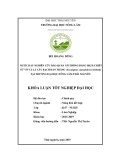
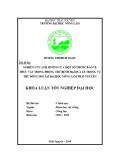
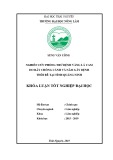
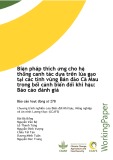
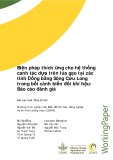
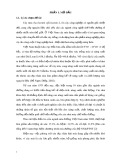
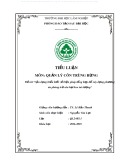
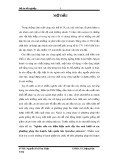
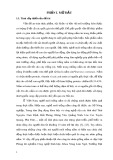
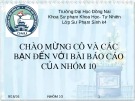
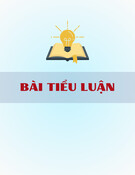
![Bệnh Leptospirosis: Khóa luận tốt nghiệp [Nghiên cứu mới nhất]](https://cdn.tailieu.vn/images/document/thumbnail/2025/20250827/fansubet/135x160/63991756280412.jpg)
